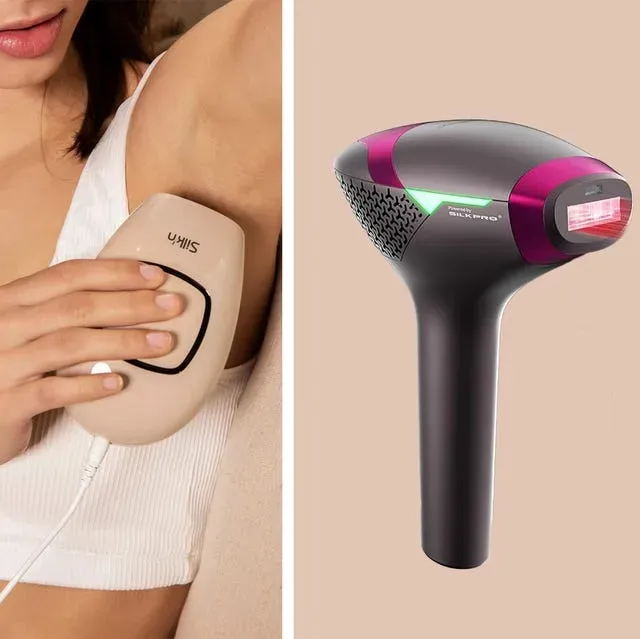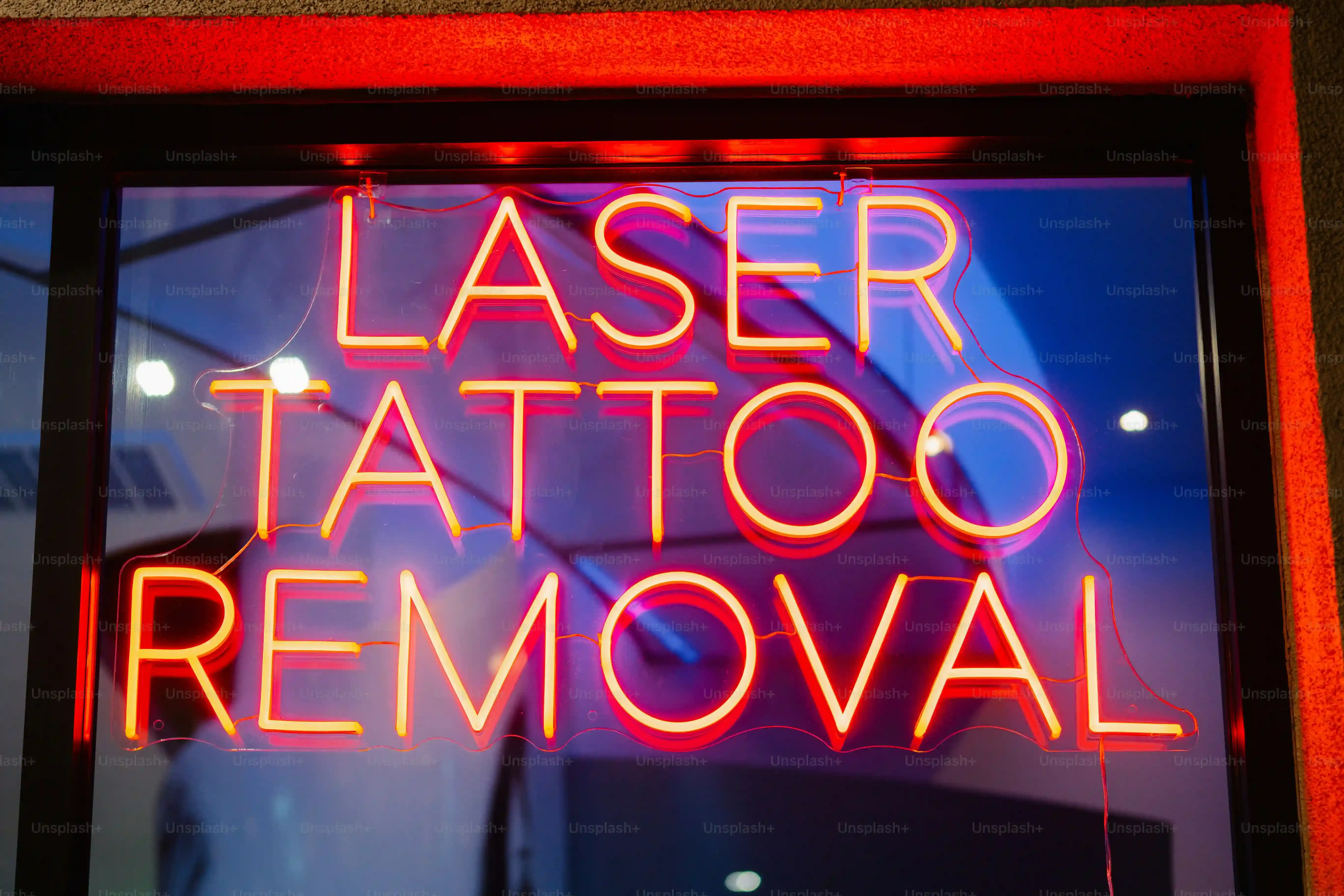Table of Contents
Tired of the endless cycle? Shaving, waxing, plucking – it feels like a part-time job just to keep unwanted hair at bay. You've probably stared in the mirror, wishing there was a way to just... make it stop. This daily battle leads many down the rabbit hole searching for the ultimate solution, often landing on the idea of laser hair removal. But let's be real, the promise of "permanent" results sounds almost too good to be true, right?
Understanding "Permanent" Hair Removal: What Laser Can and Can't Do

Understanding "Permanent" Hair Removal: What Laser Can and Can't Do
Laser and IPL: The Real Deal on "Permanent"
let's get one thing straight right off the bat. When you see "permanent" associated with laser hair removal, whether it's professional or an at-home device promising the best permanent laser hair removal results, it's usually talking about *permanent reduction*, not complete and utter eradication of every single hair follicle forever. Think of it less like wiping a slate clean and more like significantly thinning out the forest. These devices, using either true laser or Intense Pulsed Light (IPL), target the pigment (melanin) in the hair follicle. The light energy turns to heat, damaging the follicle and making it harder for hair to grow back. It’s effective, yes, but don't expect zero hair ever again. Stray hairs can pop up, dormant follicles might wake up, and hormonal changes can always throw a wrench in the works.
Why Results Aren't Always the Same
So, why do some people get seemingly miraculous results while others feel like they just bought an expensive paperweight? A few factors are at play. First, the technology: true lasers use a single wavelength of light, usually targeting melanin more precisely, often seen in professional settings. IPL uses a broad spectrum of light wavelengths, which can be less specific but also more versatile depending on the device. Second, your hair and skin type matter – a lot. Laser and IPL work best on dark hair and light skin because there's a clear contrast for the light to target the melanin. Lighter hair (blonde, red, gray) often lacks enough pigment to absorb the light effectively. Darker skin tones can absorb too much light, leading to potential burns or pigmentation issues. This is why device compatibility charts are crucial.
Here's a quick look at the key difference:
- Laser: Single wavelength, more precise, often stronger, typically requires professional use (though some at-home exist), better for specific hair/skin types.
- IPL: Broad spectrum of wavelengths, less precise but can target multiple things (like redness or spots too), common in at-home devices, generally safer for a wider range of skin types *within limits*, often requires more sessions.
How AtHome Devices Approach Permanent Laser Hair Removal

How AtHome Devices Approach Permanent Laser Hair Removal
Bringing the Clinic Home (Sort Of)
So, you've heard about these gadgets you can use while binge-watching TV. How do they stack up against the clinic experience when aiming for the best permanent laser hair removal you can get outside a professional setting? At-home devices primarily use IPL (Intense Pulsed Light), which is like a broader, less focused cousin of the laser used in clinics. They work on the same principle: zap the melanin in the hair, damage the follicle. The key difference is power. At-home devices are significantly less powerful than professional machines. This is a safety feature, preventing you from accidentally giving yourself third-degree burns in your bathroom. It also means you'll need more sessions, spaced out over several weeks or months, to see significant results. It's a commitment, not a quick fix.
Choosing the Best Permanent Laser Hair Removal Device for You

Choosing the Best Permanent Laser Hair Removal Device for You
Matching the Device to Your Skin and Hair
so you're thinking about taking the plunge and getting an at-home device for what you hope will be the best permanent laser hair removal experience possible outside a clinic. The absolute first thing you need to nail down is compatibility. Remember how we talked about skin tone and hair color being crucial? This isn't just a suggestion; it's a safety and effectiveness issue. Most at-home IPL devices have charts or built-in sensors that detect your skin tone. If your skin is too dark, the device might simply refuse to flash, or worse, it could cause burns. Similarly, if your hair is too light, you're just wasting your time (and money) because there isn't enough pigment for the light to hit. Don't try to force it. Check the manufacturer's guide religiously. Some devices are designed for a wider range of skin tones than others, but none work for everyone. It's like trying to use a sunbeam to heat up a white wall – it just won't absorb enough energy.
Features That Actually Matter
Beyond just basic compatibility, what else should you look for in a device promising the best permanent laser hair removal? Consider features that make the process more comfortable and effective. Cooling features are a big one. Zapping your skin with light can feel warm, sometimes uncomfortably so. Devices with built-in cooling technology, like the Ulike Air 3 mentioned in the search results, can make a huge difference in managing discomfort, especially on sensitive areas. Also, look at the number of intensity levels. More levels mean you can start low and work your way up as your skin gets used to it, or adjust for different areas of your body where hair might be thicker or thinner. The size of the treatment window matters too – a larger window covers more area faster, great for legs, while a smaller one is better for fiddly spots like the upper lip or bikini line. Think about where you'll be using it most.
Here's a quick checklist:
- Skin tone and hair color compatibility (check charts!)
- Cooling feature for comfort
- Multiple intensity levels
- Appropriate treatment window size
- Corded vs. cordless convenience
- Number of flashes the bulb is rated for (they don't last forever)
Reading Reviews and Setting Expectations
Before you drop serious cash on an at-home device, spend some time reading actual user reviews. Don't just skim the five-star ones. Look for reviews from people with similar hair and skin types to yours. What were their results? How long did it take? Did they experience any side effects? Pay attention to consistent feedback, both positive and negative. Remember that even the best permanent laser hair removal device isn't a magic wand. Results take time and consistency. You'll likely need multiple sessions, often weekly or bi-weekly at first, then monthly for maintenance. It's a marathon, not a sprint. And while you can achieve significant reduction, don't expect every single hair to vanish forever. Managing these expectations upfront will save you a lot of frustration down the line. Think of it as significantly reducing the workload, not eliminating it entirely.
Maximizing Results and Managing Expectations for Permanent Hair Reduction

Maximizing Results and Managing Expectations for Permanent Hair Reduction
Consistency is King (and Queen)
so you've picked a device, checked compatibility, and you're ready to start zapping. This is where the real work begins. Think of this like going to the gym – you won't see results after one workout. Consistency is absolutely key to maximizing results with at-home laser or IPL devices for permanent hair reduction. Follow the recommended treatment schedule from the manufacturer, usually weekly or bi-weekly for the initial phase. Don't skip sessions because you don't see immediate changes. It takes time for the light energy to effectively damage the hair follicles, and hair grows in cycles. You're only targeting hairs that are in the active growth phase during each session. Missing a session means you miss a window of opportunity to treat those specific hairs.
Also, make sure your skin is prepped correctly before each treatment. This usually means shaving the area beforehand (don't wax or pluck – the device needs the hair follicle intact to target). Clean, dry skin is essential. Any lotions, oils, or residue can interfere with the light energy or potentially cause irritation. It sounds simple, but skipping these steps can really hinder your progress. It's like trying to bake a cake without preheating the oven – technically possible, but the results won't be great.
Realistic Timelines and What "Reduction" Means
Let's circle back to that "permanent" word. We've established it means reduction, but what does that actually look like and how long does it take? Most people start seeing a noticeable decrease in hair growth after 4-6 treatments. The hairs that do grow back might be finer, lighter, and grow slower. Achieving significant, long-term reduction usually requires a full course of treatments, which could be 8-12 sessions or even more, followed by maintenance treatments as needed. Think of it like this: you're not aiming for a desert landscape on your skin, but more like a sparsely populated area. You might still get the occasional straggler, especially with hormonal shifts over time. Managing your expectations here is vital. Don't get discouraged if you still see some growth. The goal is a dramatic reduction in density and thickness, making shaving or other methods much less frequent and easier. It's about making your life simpler, not necessarily achieving a perfectly smooth, hair-free surface forever and ever.
- Expect noticeable reduction after 4-6 treatments.
- A full course might be 8-12+ sessions.
- Maintenance treatments will likely be needed.
- "Permanent" means significant reduction, not zero hair forever.
- Results vary based on device, hair/skin type, and consistency.
Making Peace with Hair Reduction
So, while the dream of truly "permanent" hair removal might remain slightly out of reach for most at-home users, significant, long-term reduction is definitely on the table. Think of these devices not as magic wands, but as tools that can drastically change your relationship with unwanted hair. It takes time, consistency, and managing expectations, but for many, the effort beats the endless cycle of shaving or the cost of professional treatments. You're not necessarily saying goodbye to every single hair forever, but you are saying hello to a lot less hassle and smoother skin for much longer periods. Choose wisely, follow the instructions, and understand you're embarking on a journey of maintenance, not instant, forever-bare skin.
